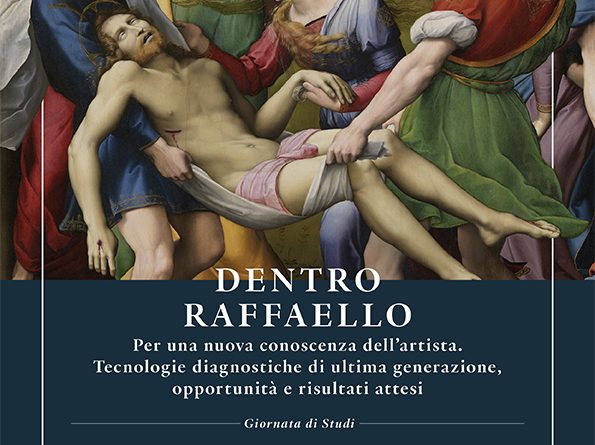Last week, our very own Academic Director, Professor Tom Henry, presented a lecture at Galleria Borghese, Rome. Sitting on the panel at the prestigious gallery’s ‘Study Day’ focusing upon Raphael, the University of Kent academic highlighted the centrality of Perugia in Raphael’s career.
According to Henry, Raphael’s intense engagement with Perugia in the period 1503-7 has always been noted. Nevertheless, the lasting impact of Vasari’s extensive discussion of the works that the young artist executed in (or for) Florence in the same period is what has come to dominate scholarly debate.
Henry argued that Raphael’s Florentine period – usually described as 1504-8 – has become an entrenched historical fact, accepted without question. However, during Monday’s lecture, he contrastingly pointed out that documents in fact place Raphael in Perugia from 1503, and even describe him as living there from January 1504.
What’s more, Professor Tom Henry claimed the city produced a rich workflow for Raphael running through to 1507 and beyond. This Perugian period saw the renowned painter produce the Oddi Coronation for S. Francesco al Prato in 1503, the Colonna altarpiece for the nuns of S. Antonio da Padova as well as the Ansidei altarpiece for the church of S. Fiorenzo in 1505, and the Baglioni Entombment for S. Francesco al Prato in 1507.
In 1505, Raphael also started the S. Severo frescoes and – acknowledged as the best artist available in Perugia during that epoch – in December of that year he first received the commission to paint the high altarpiece of S. Maria di Monteluce. In addition to these major works, a group of smaller pictures can likely be traced to Perugia, including: the St Sebastian now in Bergamo, the Madonna of the Pinks in London and the Conestabile Madonna in St Petersburg.
While these extant works alone are eloquent testimony to Raphael’s close engagement with the city, lost or unexecuted commissions such as Saint Jerome – evidenced by a drawing in the Ashmolean Museum which Sylvia Ferino demonstrated to have a background view of Perugia – supply further clarification.
Add to all this the Siege of Perugia (which could have only been commissioned by a Perugian patron) and, Henry argues, it is abundantly clear that the city of Perugia embodied a vital source of work, looming larger than Florence in Raphael’s early career.
Reflecting on the talk, Tom Henry, Academic Director of the Rome School says:
“It’s always a privilege to be invited to speak at events like these and to be given the occasion to share my expertise in the field of History of Art, particularly in such beautiful surroundings. Raphael is an intriguing area of study and is one which students of the Rome School of Classical and Renaissance Studies will further delve into over the course of the academic year ahead.”

